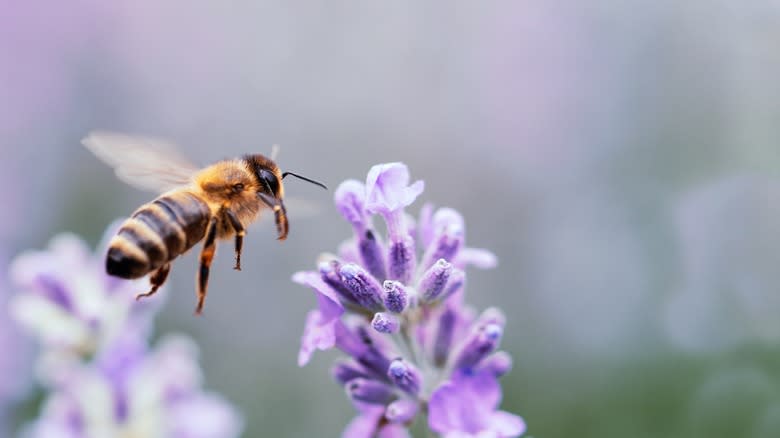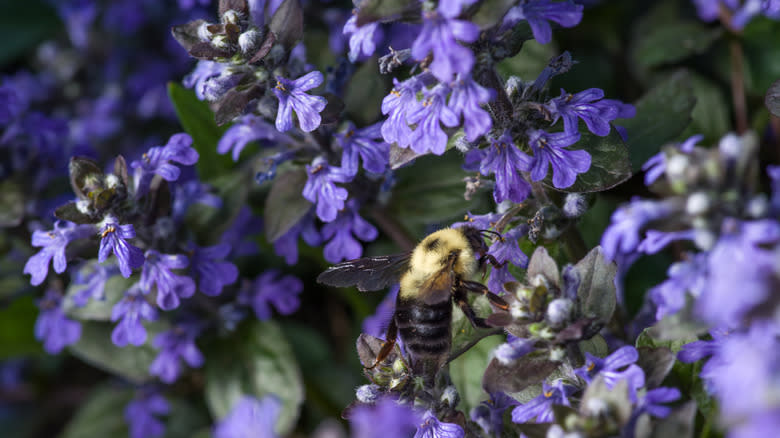This Is The Only Place In The World You Can Find Purple Honey

While honey the color of purple may sound like a fever dream or a fun title for a book, purple honey does exist in the expansive world of honey. Yet purple honey is only found in North Carolina, and though locals have been familiar with the purple-hued sweetener for years, the exact reason for the rare gem-colored honey is unknown.
In the 1970s, a professor of beekeeping and one of the presidents of the North Carolina State Beekeepers Association set out to find the mysterious cause for the purple honey. Though honeybees returned to blue-honey hives without blue-colored substances in their stomachs, the bees exiting the hives carried the colored sweetener, leaving researchers to conclude that there is a relationship between the bees' digestive systems and what is later found in the hives. Dees also reasoned that this purple honey carries a fruity taste due to fruit juices collected by the bees.
Since blooming pants are seasonal in the area, local bees visit places where darker-colored berries like blueberries and blackberries can be found. "My thought is that the bees go to that fruit, chew it up, get the juice, it goes into their honey stomach, which bees have a separate stomach than their digestive stomach," apiary owner Donald Dees explained to WRAL News.
Read more: 30 Healthy Snack Ideas That Won't Ruin Your Diet
The Unsolved Mystery Of Purple Honey

Though other areas in the world tote unique honey -- red mad honey can be found in Turkey and Nepal -- the purple honey is distinct to North Carolina. The floral notes of this unique honey could lend an interesting taste to warm cups of tea and baking projects, but getting your hands on a jar can be a challenge. Purple honey comes in short supply, and while traces of blue and purple honey can be found by beekeepers, getting enough to harvest can be tricky. "That only happens every few years — could be five or 10," Dees told The News & Observer.
Should you happen to be one of the lucky few, know that the color of purple and blue honey can fade with time, and though the taste may not change, you may find yourself drizzling a brownish-colored sweetener on top of your stack of morning pancakes, instead. We can only imagine what a spoonful of this purple honey would do for our honey blackberry sage pie recipe.
Read the original article on Tasting Table


